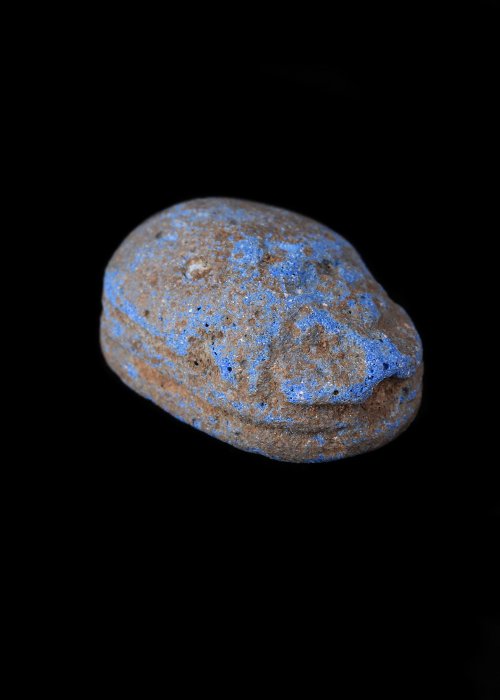
Antiguo Egipto, período tardío Fayenza Amuleto del Ojo de Horus 'Ojo Udjat' (Sin Precio de Reserva)
N.º 81670083

N.º 81670083

A lovely Ancient Egyptian scarab carved from faience in a vibrant blue colour, known as Egyptian blue. Although the piece is fairly worn, engraved details such as the head, clypeus, and wrapping legs, are still visible. The reverse appears smooth and unworked. The surface of the faience is matte and has an irregular texture due to age. There is a small chip to the underside. The scarab has been perforated longitudinally, however it is now blocked by encrustations.
The scarab beetle was an exceedingly popular symbol in the art of Ancient Egypt, thought to represent the sun god, Ra. The Ancient Egyptians believed that the scarab beetle rolling its ball of dung across the desert mirrored the journey of the sun across the sky from day to night. As the beetle laid its eggs within the dung, it became a symbol of rebirth and regeneration. Egyptian blue was a synthetic blue pigment created by the ancient Egyptians and used from as early as the 4th Dynasty, up until the Roman period. For the Egyptians the colour blue was associated with the sky, with the waters of the Nile and with the gods. It was associated with life and the rejuvenation that came from the yearly inundation and the primeval flood. Natural blue pigments came from semi-precious stones such as lapis lazuli and turquoise, which were prized for their rarity. The pigments were used extensively for the pharaohs and to depict the gods.
Measurements: L 1.5cm x W 1.0cm x D 0.7cm
Provenance: Ex-AH collection of scarabs, London 1980-2000's.
Cómo comprar en Catawiki
1. Descubre algo especial
2. Haz la puja más alta
3. Paga de manera segura